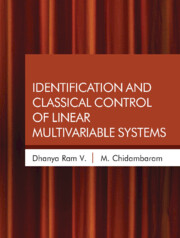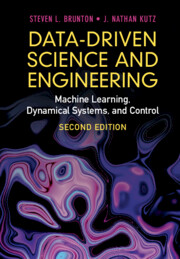Refine search
Actions for selected content:
1550 results in Control systems and optimization
Acknowledgments
-
- Book:
- Dynamic Systems
- Published online:
- 28 April 2023
- Print publication:
- 24 November 2022, pp xiii-xiv
-
- Chapter
- Export citation
5 - Thermal and Fluid Systems
-
- Book:
- Dynamic Systems
- Published online:
- 28 April 2023
- Print publication:
- 24 November 2022, pp 334-395
-
- Chapter
- Export citation
4 - Electrical Systems
-
- Book:
- Dynamic Systems
- Published online:
- 28 April 2023
- Print publication:
- 24 November 2022, pp 222-333
-
- Chapter
- Export citation
Appendix A - Units and Conversion Table
-
- Book:
- Dynamic Systems
- Published online:
- 28 April 2023
- Print publication:
- 24 November 2022, pp 758-760
-
- Chapter
- Export citation
8 - Introduction to Feedback Control Systems
-
- Book:
- Dynamic Systems
- Published online:
- 28 April 2023
- Print publication:
- 24 November 2022, pp 589-665
-
- Chapter
- Export citation
Preface
-
- Book:
- Dynamic Systems
- Published online:
- 28 April 2023
- Print publication:
- 24 November 2022, pp ix-xii
-
- Chapter
- Export citation
Contents
-
- Book:
- Dynamic Systems
- Published online:
- 28 April 2023
- Print publication:
- 24 November 2022, pp v-viii
-
- Chapter
- Export citation
Appendix C - A Brief Introduction to Wolfram Mathematica
-
- Book:
- Dynamic Systems
- Published online:
- 28 April 2023
- Print publication:
- 24 November 2022, pp 771-777
-
- Chapter
- Export citation
Copyright page
-
- Book:
- Dynamic Systems
- Published online:
- 28 April 2023
- Print publication:
- 24 November 2022, pp iv-iv
-
- Chapter
- Export citation

Identification and Classical Control of Linear Multivariable Systems
-
- Published online:
- 31 July 2022
- Print publication:
- 05 January 2023

Data-Driven Science and Engineering
- Machine Learning, Dynamical Systems, and Control
-
- Published online:
- 10 June 2022
- Print publication:
- 05 May 2022
-
- Textbook
- Export citation
Appendices
-
- Book:
- Control Systems and Reinforcement Learning
- Published online:
- 17 May 2022
- Print publication:
- 09 June 2022, pp 393-394
-
- Chapter
- Export citation
4 - ODE Methods for Algorithm Design
- from Part I - Fundamentals without Noise
-
- Book:
- Control Systems and Reinforcement Learning
- Published online:
- 17 May 2022
- Print publication:
- 09 June 2022, pp 84-158
-
- Chapter
- Export citation
Dedication
-
- Book:
- Control Systems and Reinforcement Learning
- Published online:
- 17 May 2022
- Print publication:
- 09 June 2022, pp v-vi
-
- Chapter
- Export citation
8 - Stochastic Approximation
- from Part II - Reinforcement Learning and Stochastic Control
-
- Book:
- Control Systems and Reinforcement Learning
- Published online:
- 17 May 2022
- Print publication:
- 09 June 2022, pp 280-317
-
- Chapter
- Export citation
5 - Value Function Approximations
- from Part I - Fundamentals without Noise
-
- Book:
- Control Systems and Reinforcement Learning
- Published online:
- 17 May 2022
- Print publication:
- 09 June 2022, pp 159-202
-
- Chapter
- Export citation
6 - Markov Chains
- from Part II - Reinforcement Learning and Stochastic Control
-
- Book:
- Control Systems and Reinforcement Learning
- Published online:
- 17 May 2022
- Print publication:
- 09 June 2022, pp 205-243
-
- Chapter
- Export citation
Index
-
- Book:
- Control Systems and Reinforcement Learning
- Published online:
- 17 May 2022
- Print publication:
- 09 June 2022, pp 433-436
-
- Chapter
- Export citation
Frontmatter
-
- Book:
- Control Systems and Reinforcement Learning
- Published online:
- 17 May 2022
- Print publication:
- 09 June 2022, pp i-iv
-
- Chapter
- Export citation
Preface
-
- Book:
- Control Systems and Reinforcement Learning
- Published online:
- 17 May 2022
- Print publication:
- 09 June 2022, pp xi-xvi
-
- Chapter
- Export citation
